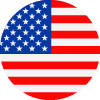How are Frames by Hubble made?
Frames by Hubble now have various new eyewear collections sourced from a variety of high-quality materials. These were introduced to pair sleek, stylish designs with all-day comfort.
But have you ever wondered just how Frames by Hubble are made and specifically with what materials?
Okay, so maybe how glasses are made isn't at the front of your mind lately, but I should warn you that getting to know precisely how Hubble creates their high-grade eyewear may cause you to fall in love with our frames— if you're not already an avid fan.
Let's dive right in and make a believer out of you.
What are the materials used to create Frames by Hubble?
Unlike the injected plastic typical of many brands, the Hubble Custom Collection frames are made from high-quality cellulose acetate from one of the oldest manufacturers in the world.

In order to achieve the rich colors and distinctive patterns you love so much, each acetate is handcrafted by mixing various colors in large tumblers; then, the tumbled acetate is manually rolled out and hand-cut to ensure consistency.
Now, that's what I call personalized craftsmanship!
This handmade plastic is strong enough to last for many years but flexible enough to be gently manipulated when heated—all without losing its exquisite luster.
No two blocks are exactly alike, and each acetate bears the unique characteristics that only expert acetate artisans can achieve.
This process allows for Hubble frames to be genuinely unique.
You may be asking yourself, "Wait a minute, all your frames can’t be made from acetate." You're correct—we've also introduced a variety of other frame materials you'll get to know shortly.
Our Hubble-approved frames, while not developed in-house, are thoughtfully sourced from a family-owned, top-level US-based company.
Unlike our Hubble Custom Collection, these frames are made from various materials, at times more than one in a single frame.
Time to meet our team of Hubble-Approved frame materials!

Stainless Steel: This is a non-corrosive, durable, and strong material. Not only can it be easily shaped into ultra-thin sleek eyewear styles, but it's also incredibly durable.
Titanium: This is a high-strength material that is extremely durable, hypoallergenic, and corrosion-resistant. Unlike stainless steel, titanium is incredibly lightweight.
Monel: This is a nickel alloy containing 68% nickel, 30% copper, and 2% iron. Monel is the most commonly used frame material today and is often time used for elements that require sturdiness and rigidity.
TR90: This is a thermoplastic material that's exceptionally durable, flexible, and lightweight. Due to their flexibility, they can bend under pressure but easily snap back into shape. TR90 material is ideal for kids' eyewear in that they are impact and damage-resistant.
Cellulose Propionate: This is a lightweight material produced via injection molding, similar to Cellulose Acetate, and starts in the form of plastic pellets. Compared to Cellulose Acetate, it has lower plasticizer migration and is stiffer.
You've gotten to know our various frame materials, but what about the materials used to create Hubble lenses?
What goes into creating Hubble lenses?
Hubble offers high-quality lenses that come with various protections at no additional cost.
- Anti-reflective/Anti-glare: This eases eye strain by reducing reflections and eliminating glare.
- Anti-scratch: This will guard lenses from any incidental contact from regular use.
- Hydrophobic: Our frames repel moisture to help prevent smudging and fogging. They can also avert most dirt and contaminants from bonding to the lens.
- Oleophobic: This creates an oil-resistant, anti-fingerprint surface impervious to dirt, dust, oils, and other particulates—resulting in easy-to-clean frames.
- UV-protection: This makes it more comfortable to see in bright-light conditions, protects your eyes against harmful UV and UVA sun rays, and reduces squinting.
We offer two primary lens materials: polycarbonate and 1.67 high-index.
- Polycarbonate: Most of our lenses are polycarbonate—a lightweight and shatter-proof blend of plastic and glass.
- 1.67 high index: This is recommended for anyone with a strong prescription (+/-4.0) and is up to 20% thinner than polycarbonate lenses. Please note this is an add-on.
We also offer blue-light filtering on all glasses and polarized sunglasses options.
- Blue light filtering: Blue light is a subset of light emitted by digital devices such as computers, phones, and electronic screens. Hubble's blue light filtering option allows customers to add blue light filtering to their lenses to aid in reducing digital eye strain.
- Polarized Sunglasses: All of our sunglasses are polarized and 100% UVA/UVB protected.
We don't currently offer transition lenses from optical to sun and progressive/bifocal lenses but hope too soon.
We haven't covered the integral reason we wear Hubble glasses in the first place—vision correction. Let's get to know our prescription lenses a bit.
What are the prescription lenses used for Frames by Hubble?
Hubble frames offer single vision, readers, non-prescription lenses, and sunglasses, all with the ability to upgrade to premium materials and/or treatments like blue light filtering or thinner 1.67 high index lenses for stronger prescriptions.
- Single Vision: These lenses correct one field of vision - near, intermediate, or distance. Single vision lenses have one correction in each lens, and the prescription consists of a sphere, cylinder, axis, and pupillary distance.
- Readers: These lenses consist of only a sphere and offer simple magnification for things like reading. You don't need a prescription to purchase these frames.
- Non-Prescription: These lenses offer no prescription correction and are commonly purchased with a blue light filtering option.
- Sunglasses: Hubble offers non-prescription, single vision, and readers sunglasses. Our sunglasses are anti-scratch, block UVA and UVB rays, and are polarized.
Customers purchase prescription glasses to aid in correcting three eye conditions.
- Nearsightedness (Myopia): You can see better near than you can far. If you have a negative number for your prescription, you’re usually nearsighted.
- Farsightedness (Hyperopia): You can see better far away than close up. If you have a positive number for your prescription, you’re usually farsighted.
- Astigmatism: A distortion in the eye that causes blurred vision.
There are so many great things going on behind the scenes every day with one goal in mind, to provide exceptional lenses at an affordable price.
In love with Frames by Hubble yet?
You're now well informed on how Hubble's frames are made, the dedication and craftsmanship that goes into each lens, and the prescription needs we meet.
You're ready to wear Frames by Hubble with confidence that your eyes are getting the star treatment they deserve.
With six new collections - Tortoise, Trendsetter, Crystal, Timeless, Bespoke, and Kids, starting at $48, you're guaranteed to find frames you'll love and wear for time to come.

